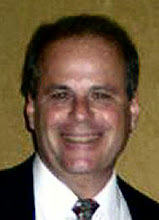The second and third parts of the Museum's short series of articles published in 1905 is now available. These three articles commemorate the 250th anniversary of the Jewish presence in the United States, one article specifically discussing the contributions of the Jews of New York.
The first article of the three (announced one week ago) was written by Oscar S. Straus, who was U. S. Secretary of Commerce and Labor under President Teddy Roosevelt (the first U. S. Jewish Cabinet secretary) as well as a Minister to Turkey. Straus wrote about the early history of the Jewish immigration, and the presence of Jews in the U.S. in such cities as Newport, Rhode Island; Philadelphia, Pennsylvania; and several states and cities to the South, such as Georgia, Charleston, Maryland, Louisiana, Texas, Virginia. He also wrote about the early Jewish presence in the Ohio Valley, Chicago and California. This article, previously announced on this blog, can be found at www.museumoffamilyhistory.com/lia-250-sfcall.htm.
There was actually a second article published in this same edition of the San Francisco Sunday Call (on the opposite page) entitled "The Future of Judaism in America: What Leading Hebrew Thinkers Prophesy For the Race," partly written by the Rev. Mendola de Sola. This interesting article can be found at www.museumoffamilyhistory.com/lia-250-sfcall-future-judaism.htm.
The third article in this triad is from April 1905 and is entitled "Jews in New York 250 Years." This article talks about the early history of the Jewish people who lived in New York and the contributions they've made. The article can be found at www.museumoffamilyhistory.com/lia-250-nydt-ny.htm.
All three articles, of course, are educational. None of us were alive in 1905, so reading the opinions of Jews and non-Jews alike on what the Jewish contributions had been to that point to the well-being and prosperity of the U.S. and more specifically New York is important, or at least should be. We can't actually go back a hundred years in time to experience what Jewish life was like back then; we can no longer speak to anyone who used to live in the U. S. during that period, but at least we can read what others read during 1905 about our collective Jewish contributions, and then use our imagination and analytic thinking to 'paint a picture' in our own minds of a society that our parents, grandparents, or great grandparents once lived in and helped build.
Subscribe to:
Post Comments (Atom)




No comments:
Post a Comment